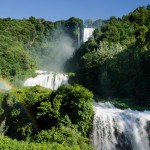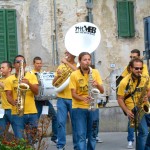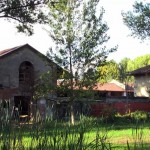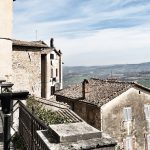Choose your favourite guided tour
Green Umbria: Marmore Falls
Travel diary in the very centre of Italy, across its green heart: the region Umbria. Marmore Falls and Terni. Don’t forget food have you ever taste Ciriole?
Italy, also known as Bel Paese (beautiful country) can offer the visitors so much, both from an artistic and historical point of view and for the cuisine… We are not talking about nouvelle cuisine but we are talking about traditions….
I would like to take you to 2 different Italian regions where food and history create the right mix to dress your… vacation.
FIRST STOP is in Umbria, my father’s homeland where, during vacation, I spent hours observing my grandmother and aunts working in the kitchen. It’s called the green heart of Italy because of its green landscape characterized by hills, little villages perched on its slopes, historical and artistic centers. We run along unconventional paths to discover those spots that are unknown to the majority…
Let’s start from the Marmore falls, not far from one of the biggest city and to the less typical: Terni that has been known since the second Industrial revolution because of its steel manufacture that gave the city its “metropolitan” aspect with very high buildings and a city center that is on human scale. Terni is also known because it’s the city of love, of Saint Valentine…. You all know him for sure!
But I don’t want to take you to this city, I would prefer you to be ravished by the multiple little towns, villages all around: Rocca San Zenone, Montefranco… beautiful views to satisfy your senses: the sight, but I can assure you the taste too. Wherever you go, you can be attracted by such delicious plates and sweets.
While approaching to the falls, you will start hearing the roar of the water, feeling the fresh air and seeing fog and little drops in the air and white foam… they are 165 meters high and are characterized by a triple drop. The Velino river leaves its water to fall down into the Nera river. The natural scenario they create is something magical and you must follow the paths or the guided tours to discover very suggestive views.
All along the Nera river you will find different villages that are so nice… just to stop for a drink wandering all around its wonderful streets: Scheggino, Umbriano, Cesi, Titignano. And if you love practicing sports, don’t forget to stop for kayaking or rafting, there are several associations that allow you to stop for a ride!
Then follow the way towards Rome and have a stop at Carsulae: it’s an ancient Roman town along the Flaminian way that linked Rome to the Adriatic sea passing by Terni and San Gemini. It has completely been covered because of earthquakes and, even today, most of its surface is still undiscovered. Here and there you can find traits of the ancient Flaminian way, a forum, the thermal baths, a theatre and amphitheater… This was the place, where in the past the inhabitants of Terni were used to picnicking.
Once you leave Carsulae, take the way to Firenze, follow the exit to Fabro and then Montegabbione where we are going to discover such an amazing place that is unknown to the most but it’s something unbelievable… La Scarzuola, whose name comes from Scarza, a marsh plant which the founder used to build himself a shelter with.
(Guided tours: every year – minimum 8 people: phone 0736.837463 – Once you get there, ring the bell and you will be let in by the guardian)! This is a Franciscan convent, founded in 1218 by St. Francis of Assisi and bought in 1956 by Tommaso Buzzi who wanted to build, close to the convent, his Ideal city, a theatrical machine. This site includes 7 theatres and ends up in the Acropolis. A piled-up wealth of buildings comprising numerous archetypes, empty inside and provided with so many compartments, as a termites nest which allows you to observe the world around through surprising vistas. So doing, the architect wanted to create a link between the sacred city represented by the convent and the profane one: the theatre. The whole site can be considered an example of neo-mannerism: stairs used in all directions, the deliberate disproportion of some parts, the heaping together of buildings and monuments…
We have been wandering all arount the souther part of this green region that is the cradle of a kind of pasta that changes its name according to the different places: strangozzi, stringozzi, …. And, in this part of the region:
Recipe for: Ciriole
Ingredients (for 4 people)
For the pasta
- 4oog flour:
- 1 egg;
- water;
- salt.
Pour the flour on the work surface, like a fountain. Add the eggs, salt and water enough not to have a too liquid dough. Let it rest for 30 minutes and start to roll it out in a single pastry. Pour the flour on the surface because it has not to stick neither to the rolling pin nor to the surface. Roll it up on itself and start cutting it so that, once hung, you get a sort of long pasta.
In the meantime, prepare a fry of oil, garlic and chilli. Finally add the diced tomatoes and cook it until tomatoes are completly wilted. Serve the pasta with the sauce.
Another flavouring that is very typical is with black truffle: grate the truffle with half clove of garlic; add salt, pepper and abundant olive oil. In a pan, fry two cloves of garlic with other oil that, once hot, pour it on the mixture of truffle. Use it to season the previously in boiling and salted water cooked pasta.
Enjoy it!
Federica Cagnoni
Main pic courtesy of Antonio Picascia (Flickr user Supersum)















